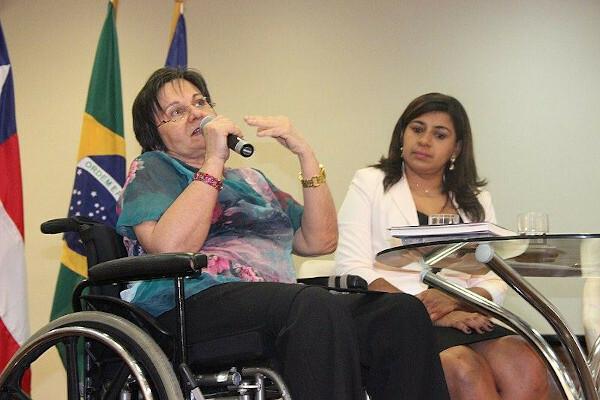THE violence against women it is any harmful act that results in physical, psychological, sexual, patrimonial damage, which has the main motivation the gender, that is, it is practiced against women expressly because they are women.
Violence against women can be practiced in the context of private life in individual actions, examples of this are:
- the harassment
- to domestic violence
- the rape
- O femicide
- obstetric violence
However, violence against women also can be practiced as collective action, this is the case, for example, of state policies on female genital mutilation still practiced in some places. Collective action of violence can also be practiced by criminal organizations, such as the women trafficking network for forced prostitution.
Read too: What is feminism?
History of violence against women
Gender violence, not only as a physical act, but symbolic of the devaluation and social subjugation of women, is a phenomenon as old as humanity itself. Although one hears of societies (legendary and otherwise) that were led by women, the vast majority of civilizations were characterized by models of
power and male leadership.In feminist literature and even in social science literature, this phenomenon is defined in the numerous approaches to the concept of patriarchy. Carole Patman (1988), for example, pointed out that the patriarchy is a system of power similar to slavery.
This is because in the patriarchal social model there is no public regulation on the sphere of private life, therefore, power imbalances in the domestic environment are not subject to regulation or inspection by the sphere politics. This allows this model to be entirely subject to the will and discretion of those who have the economic power of the family sphere, you.
Examples of patriarchal model practices they are the woman's obligation to have sexual relations with her husband despite her own will, the “legitimate defense of male honor”, which for a long time was legally and socially accepted.
In Brazil, patriarchy developed from colonization. The large tracts of land administered by a head of the family to whom all, slaves and free, who were on the territorial limits of his domain, subordinated themselves. O patriarch, a large landowner, headed an extended family, made up of blood relatives to godparents, and each clan functioned in a self-sufficient and independent way from the others.
In this context, as Nísia Floresta points out, women were deprived of access to education and citizenship politics. In addition they were extremely repressed in their sexuality, considered irrational and incapable, controlled in everything.

The process of urbanization transformed and redefined domestic domination:
- until 1827, women could not attend elementary schools;
- until 1879, women could not enter Higher Education;
- until 1932, women could not vote;
- until 1962, married women needed their husband's authorization to travel, open a bank account, have a business establishment, work and receive inheritance;
- until 1983, women were prevented from playing sports considered men, such as football.
The most comprehensive expansion of women's rights in Brazil occurred only with the 1988 Constitution.
The question of domestic violence came to be considered more consistently in the Brazilian public sphere through the creation of councils, government secretariats, defense centers and specific public policies, already in the 1980s. The first Police Station for Specialized Assistance to Women (DEAM) was created in 1985, in São Paulo, and the main law for the prevention and punishment of domestic violence is even more recent, the Maria da Penha Law, enacted in 2006.
See too: What is sorority?
Main causes of violence against women
Violence against women stems from uneven construction of the place of women and men in the most diverse societies. Therefore, the gender inequality it is the basis from which all forms of violence and deprivation against women are structured, legitimated and perpetuated.
Gender inequality is a power asymmetry relationship in which social roles, behavior repertoire, sexual freedom, life choices, leadership positions, the range of professional choices is restricted to females compared to masculine.
The causes, therefore, are structural, historical, political-institutional and cultural. The role of women was for a long time limited to the domestic environment, which, in turn, was a private domain property that was not subject to the same legislation as public environments.
Therefore, the woman herself was seen as a private property, without the right to their own will and without the right to citizenship forged in public spaces, it is not by chance the female suffrage and the civil rights for women are recent achievements in many countries and not yet fully realized anywhere in the world. world.
Individual and everyday situations, such as being harassed in the street, having supervised and controlled behavior, not being able to wear certain clothes, being the target of jealousy, repressing one's sexuality, are symptoms, not causes, of more dramatic violations, such as rape and femicide.
Domestic violence is not exclusively the result of personal misfortune, bad choice, bad luck. She has deeper sociocultural bases, even women who break the barrier of silence and decide to denounce or seek justice feel much more forces the gender inequality structure's reaction to discouragement, to the suspicion cast on the victim rather than the aggressor.
The structuring cause, which is the gender inequality, is aggravated by other factors that also increase vulnerability to violence, such as poverty, the xenophobia it's the racism. While gender-based violence affects all women, it combines with other factors and is felt most harshly by poor, refugee and black women.
Types of violence against women
According to the typification of the Maria da Penha Law, Law nº 11.340/2006, there are five types of violence against women:
- Physical violence: any action that offends bodily integrity or health.
- Psychological violence: any action that harms psychological health and self-determination, such as:
- embarrassment
- humiliation
- ridicule
- isolation
- chase
- bribery
- control etc.
- sexual violence: any action that limits the exercise of sexual or reproductive rights, such as:
- coercion to witness or participate in unwanted sexual intercourse
- preventing the use of contraceptive methods
- inducement of abortion or prostitution etc.
- Property violence: any action that configures retention, subtraction, partial or total destruction of objects, assets, resources, personal documents, work instruments, etc.
- Moral violence:any action that constitutes libel, injury or defamation.
Violence against women in Brazil
Brazil became world reference with the Maria da Penha Law, 2006, which, in addition to proposing harsher penalties for aggressors, also establishes measures to protect women and educational preventive measures with a view to improving the relationship between men and women. According to data from the National Council of Justice (CNJ), in 2018, around 400,000 protective measures were applied.
The cases in which the protective measure is insufficient to prevent femicide are small percentages, so this is a effective mechanism to protect women. Also according to the CNJ, there are more than 1 million lawsuits related to the Maria da Penha Law in the Brazilian courts.
![Maria da Penha survived two femicide attempts, became paralyzed and fought 19 years for justice without her aggressor being punished. [1]](/f/7e2e83aa9e8eafe2e9d93be8053375e3.jpg)
According to the Brazilian Public Security Forum, in 2018, the most victims of femicide were women, black, with low education and aged between 30 and 39 years, where:
- 61% were black;
- 70.7% had attended only elementary school;
- 76.5% were between 20 and 49 years old.
The panorama presented by the Brazilian Public Security Forum is alarming:
- 1,206 femicide
- 263,067 cases of intentional bodily violence
- 66,041 rapes
The three types of violence against women are mostly committed by men close to the family.
Remember that we are talking about reported cases. These statistics mean that every 7 hours a woman is murdered in Brazil, every 2 minutes there is a record of bodily harm. There are 180 rapes a day in Brazil, more than half of them against girls under 13 years of age.
O Atlas of Violence, from 2019, carried out by the Institute of Applied Economic Research (IPEA), points out that in a 10-year interval, between 2007 and 2017, femicide practiced in Brazil increased by 30.7%.
Another survey carried out by the DataSenado Institute, National Survey on Domestic and Family Violence, reveals a trend of change inaggressor profile. Between 2011 and 2019, violence against women was practiced in a higher percentage by the current partner, however, this profile showed, in this period of time, an inclination to fall. In 2011, 69% of aggressions were committed by the current partner, in 2019, this percentage was 41%.
The number of aggressions committed by former partners grew, in 2011, they accounted for 13% of cases of domestic violence, in 2019 there were 39%, technically tied with the current partner.
Also access: Social minorities - marginalized portion of the population
Consequences of violence against women
Violence against women is one of the main forms of violation of Drights Hone year today in the world. It is a type of violence that can affect women in different age, economic, ethnic, geographic, etc. cleavages. The imminent and even potential threat of suffering this form of violence restricts women's civil liberties and limits their possibilities of economic, political and social contribution to the development of their communities.
Violence against women and all forms of violence burden health systems of countries. Women who experience violence are more likely to need health services than women who do not suffer violence, and, in case of permanent damage to physical integrity and mental health, they need treatment continued.
Research carried out in the field of health indicates that among the main consequences suffered by women who go through situations of violence are|1|: “feelings of annihilation, sadness, discouragement, loneliness, stress, low self-esteem, incapacity, impotence, hatred and uselessness”. Among the diseases that are developed are:
- obesity
- Panic Syndrome
- gastritis
- inflammatory and immunological diseases
- mutilations
- fractures and injuries
Behavioral changes such as:
- insecurity at work
- family relationship difficulty
- sexual and obstetric difficulties
- smoking habit development
- greater accident prone
Therefore, the consequences of violence against women are multidimensional and affect from the family scope to the labor market and public health.
Note
|1| NETTO, Leonidas de Albuquerque. MOURA, Maria Aparecida V. QUEIROZ, Ana Beatriz A. TYRRELL, Marie Antoinette R. BRAVO, Maria del Mar P. Violence against women and its consequences.
Image credit
[1] Neusa Cadore / commons
By Milka de Oliveira Rezende
Sociology Professor
Source: Brazil School - https://brasilescola.uol.com.br/sociologia/violencia-contra-a-mulher.htm

